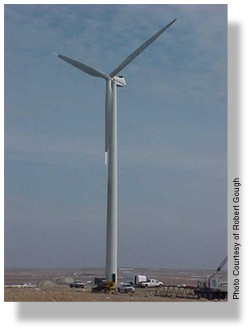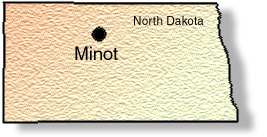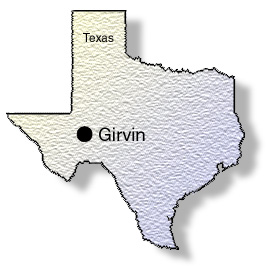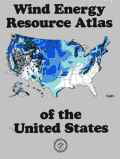

Although he didn’t know it at the time, Larry Widdel’s future in the world of wind energy development was secured years ago when his family bought some farmland near Minot, North Dakota. Widdel remembers hauling piles of rocks off the acreage, clearing it for the family’s cattle.
“It was the poorest land we owned,” Widdel laughed. “My uncle said, ‘Boy, this is awful. We don’t own mineral rights. We don’t own anything but the air above it.’ Who would have guessed that the air above our land might be worth money someday?” No one could have predicted that Widdel’s rocky land, which has an outstanding wind resource and small hills that are perfect for siting wind turbines, would someday feature two 1.5-megawatt wind turbines. Thanks to Basin Electric Power Cooperative, Widell and his family have joined the ranks of rural landowners who are leasing their land and cultivating the cash crop of the future: electricity from the wind. And Widell couldn’t be happier about it. “We’re very lucky that we were chosen,” he said. At a time when economic predictions for the family farm are anything but rosy, wind energy is a bright spot on the horizon. Rural landowners like Widdel who lease their land to wind developers typically receive about 2 percent – 4 percent of the gross annual turbine revenue — or $2,000 to $4,000 for each turbine — which can help compensate for a downturn in commodity prices. Annual farm income can be increased by $70 an acre. But as with any business venture, rural landowners interested in leasing their land should do their homework. Lease Agreements Wind developers must take several preliminary steps before they can install turbines. First, they need to measure the wind resource on the site they’ve selected and assess its proximity to transmission lines. Next, they need to line up capital and commitment from energy buyers. Finally, they must complete any required environmental analyses and zoning and permitting processes.
Some wind developers will offer a landowner a “good faith” contract, which allows the developer to control the site while these preliminary steps are taken. Under this contract, the landowner may not enter into contracts with other wind developers. At the end of the time period outlined in the contract (usually 1 to 5 years), the developer must decide whether to install turbines or give up interest in the land.

If all goes well in the preliminary steps, the wind developer and landowner negotiate a lease. The arrangement is similar to a lease used to reserve mineral rights. The landowner assumes no financial responsibility for the project. The wind developer may offer the landowner a single up-front payment, a fixed annual payment, a share of the revenues from a wind project, or a combination of these payment methods. The rate of return for the landowner is proportional to the level of risk assumed.
The first option, a single up-front payment, may sound attractive. Even if the wind turbines fail to produce as expected, the landowner receives the guaranteed payment. But if the turbines produce more electricity than expected, the landowner won’t receive extra compensation. Also, the value of wind is expected to increase over time, in which case this payment arrangement would be a disadvantage.
Landowners should also know that any future sale of the property is likely to be complicated by this arrangement. Up-front payments are structured so that the developer receives a perpetual lease to the wind resource rights on the property. The landowner should consult with a tax adviser about the possible consequences of receiving one large payment.
The second option, a fixed annual payment, is less risky for the landowner, and it may have less impact on the landowner’s income taxes. But it may also result in a smaller share of the revenue. Still, some landowners prefer the relative security of an annual payment.
Basing the lease on a share of revenues is the third option. The compensation will vary according to the output of the turbines. This is probably the best option for a landowner who wants to ensure future compensation for increases in the value of wind power.
A leasing arrangement may include a combination of these payment options. For example, a landowner may request a fixed payment per acre along with a share of the revenue from each turbine.
 Cielo Wind Power approached Louis Woodward, a rancher in Girvin, Texas about leasing his land to build wind turbines.
“Nobody likes a bunch of vehicles running over their property,” Woodward said. “We don’t get much rain out here, and needless to say, without rain, we don’t get much vegetation.”
Woodward finally signed a lease agreement after the developers agreed to install underground transmission lines and follow his recommendations when reseeding grass. Cielo also agreed to pay for any injuries to his livestock.
Today, Woodward has 242 turbines on his property.
Landowners
should discuss all easement issues with their attorneys and the developers
prior to signing a lease agreement.
More Factors to Consider
While leases, taxes and easements are major concerns, there are other factors
to consider as well:
Cielo Wind Power approached Louis Woodward, a rancher in Girvin, Texas about leasing his land to build wind turbines.
“Nobody likes a bunch of vehicles running over their property,” Woodward said. “We don’t get much rain out here, and needless to say, without rain, we don’t get much vegetation.”
Woodward finally signed a lease agreement after the developers agreed to install underground transmission lines and follow his recommendations when reseeding grass. Cielo also agreed to pay for any injuries to his livestock.
Today, Woodward has 242 turbines on his property.
Landowners
should discuss all easement issues with their attorneys and the developers
prior to signing a lease agreement.
More Factors to Consider
While leases, taxes and easements are major concerns, there are other factors
to consider as well:
Learn More about Wind Development on Your Land These organizations and resources are recommended if you need additional information on wind power development issues:

